"Ivanhoe": characterization of the hero in the context of the era
Ivanhoe is a classic of world literature. The name of the brave knight seems to be heard or known to everyone, even those who have not read the works of the famous novelist. Therefore, it seems relevant to refer to the famous work of W. Scott. This will explain the success of the novel, and also help to understand the reason for its popularity today.
A brief overview of the writer's work
Adventure-adventure themes on a historical background occupies a prominent place in English literature. The famous work that Walter Scott wrote is Ivanhoe. Ivanhoe's characterization is the subject of this review. The Scottish writer became famous as the creator of a whole series of adventure novels dedicated to the history of medieval England and Scotland.
He began his creative activity with the creation of lyric-epic ballads based on folk songs and Scottish folklore. The young poet was so carried away by ancient legends, legends, ancient songs that he personally collected and recorded them for several years. The result was the emergence of such wonderful poems as "The Song of the Last Minstrel" (1805), "Lady of the Lake" (1810), "Rockby" (1813).
General characteristics of the hero
Very soon Scott turned to large-scale prose. After the release of his new work ("Waverley, or Sixty Years Ago", 1814), the writer created one of his most famous novels - "Ivanhoe" (1819). Here the author went beyond the exclusively Scottish theme, turning to events from English history. The action takes place in the XII century, during the reign of King John Landless.
Ivanhoe, whose characteristics are inseparable from the general historical background, cannot be imagined in isolation from his social soil. This hero is a typical representative of the knightly class of medieval England. He is the son of the head of an ancient clan, who fell out of favor with his father, who expelled him from home. From that time on, the young man was forced to seek his fortune only with his sword and courage. He embarks on a journey, and here, according to the canon of the genre, many exciting adventures take place with him.

Comparison of the knight with the characters of the novel
The description of the portrait of the protagonist (who, of course, is handsome, brave, honest and noble) suggests an appeal to the theme of his relationship with the people around him, primarily with his father Cedric Sax, King Richard the Lionheart, Lady Rowena, Rebekah and, finally, Briand de Boisguillebert . The young man did not have a relationship with Lord Cedric Sax. Having fallen in love with his pupil Rowena, Ivanhoe opposed Cedric's matrimonial plans to arrange her marriage with the offspring of the royal family, which led to a well-known quarrel and subsequent exile. However, the young man still respects his father. Ivanhoe, whose characteristics we are considering, is unforgiving and respectful to the parent.
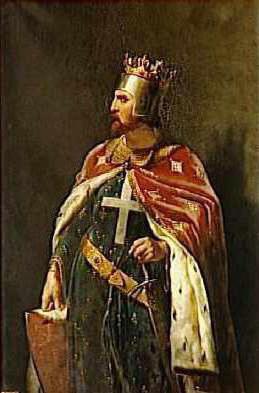
Scott draws his pet as a real knight without fear or reproach. He is loyal to the king and is ready to fight for his cause to the last. Loyalty to Richard is one of the main features in his portrait. Ivanhoe, whose characterization involves referring primarily to the love line of a young man and Lady Rowena, is especially interesting in a pair with his bride, since she is, in fact, his best friend. The girl unconditionally believes in the decency of her chosen one, despite all the slander of others, numerous rumors and gossip. Young people are both calm, firmly convinced that they are right, they endure the trials that have fallen to their lot with dignity.
Restrained Rowena is contrasted in the novel with the image of the Jewess Rebekah. She is more impulsive and open: her emotionality affects the most decisive moments. Perhaps this is what she aroused the sympathy of the protagonist.
The characterization of Ivanhoe and Briand is perhaps the key point in the description of the characters. The knights converge in the final duel for the honor of the slandered Rebekah, and the advantage was clearly not on the side of the protagonist, who had not yet fully recovered from the previously received wound. However, the moral strength of the young man and his consciousness of his rightness were so great that the enemy could not stand it not so much physically as morally.
Portrait against the backdrop of the era
Ivanhoe, whose characterization is inscribed in the general historical context of the work, is very realistic. Scott was anxious about reproducing the realities of the distant 12th century. It should immediately be noted that the figure of the protagonist is a typical image of a knight of that time, although somewhat idealized. Nevertheless, the common features are still quite recognizable even for a non-specialist.
The so-called "nobility of the sword" fought in the royal troops, where they received a salary. However, often representatives of the noble class did not find a home for themselves and then began to lead a wandering life. The poorest of them even joined the ranks of the "forest brotherhood" - free robbers. Fortunately, nothing of the kind happened to our hero, but from the very beginning of the novel it was obvious that he had no permanent home. It was in this position that a significant part of the chivalry of that time was located, and not everyone had the luck to marry a rich and noble lady, as happened with the hero of the novel.
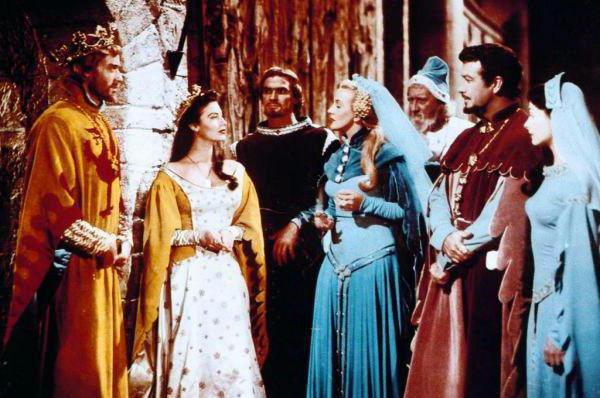
The success of a work of art
The characterization of Ivanhoe, briefly presented in this review, should be completed by indicating the place of W. Scott's work in fiction. This is perhaps the most popular work of the writer to date, which was filmed both in foreign and domestic cinema. The secret of popularity is explained by the famously twisted plot, complex characters, and the magnificent color of the era. Undoubtedly, this novel should be considered the most successful creation of the writer.
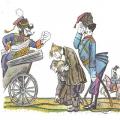 “Lefty” - a summary of the work N
“Lefty” - a summary of the work N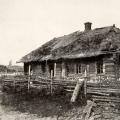 Turgenev, "Biryuk": a summary
Turgenev, "Biryuk": a summary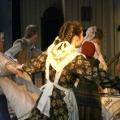 Comedy A.N. Ostrovsky "Poverty is not a vice": a summary of the work
Comedy A.N. Ostrovsky "Poverty is not a vice": a summary of the work